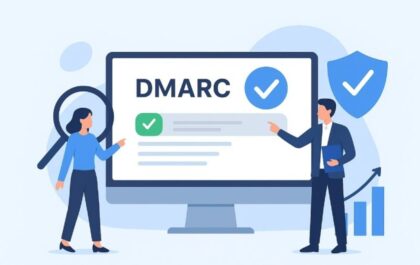Cybersecurity has become so important that many businesses create separate budgets for this activity. They carefully plan which tools and methodologies to use, as this can make all the difference in avoiding or minimizing potential attacks. One of the biggest questions companies have to make is whether they need a centralized or decentralized IT strategy.
Going with a centralized approach presumes having all systems, tools, and procedures in one place. Your IT team will have access to all processes from a single source, ensuring a higher degree of control. This methodology eliminates siloes between different departments, ensuring faster responses and a more comprehensive view of processes.
In this article, we’ll take a deep dive into the concept of centralized cybersecurity management. Besides explaining its benefits, we’ll also compare this methodology with the decentralized approach.
Table of Contents
ToggleWhy Companies Need a Centralized Management?
Whether we’re talking about cybersecurity or some other activity, most companies prefer a centralized methodology for managing different processes. This gives more visibility of daily processes while storing all documents in one place. Furthermore, using centralized solutions makes it much easier to stay compliant, avoiding potential fines.
By streamlining these activities, companies are able to save a lot of money and avoid miscommunication. It is also an excellent approach for minimizing errors and ensuring standardization. Here are some of the main benefits of a centralized cybersecurity.
Enhance Visibility
Management must have full visibility of daily operations to make smarter decisions. In terms of cybersecurity, enhanced visibility allows teams to analyze the influx of daily threats, assess vulnerabilities on a company level, and address threats as they appear. Through better oversight, IT experts are able to recommend improvements that will further improve the protection.
Document Activities
By documenting everything, cybersecurity teams can make a breakdown of root causes, incoming threats, and other issues. Furthermore, it allows for a comprehensive comparison of results vs. expectations. Documentation is especially important for companies that hire managed SOC services, as it allows better control and performance analysis.
Thorough documentation allows you to store data regarding various events and anomalies. By extrapolating insights, the company’s technicians can develop even better, more proactive cybersecurity measures.
Reduce Impact on Firewall
When using a centralized methodology, you have the option of controlling all security software and features from a single access point, that is, the server. So, when your company is processing data through a single server, the organization’s firewall won’t have to tackle as much load as previously required.
In that sense, having a centralized solution ensures that your firewall can increase the throughput of safe traffic. As if that wasn’t enough of an incentive, the company’s IT crew will have an easier time handling the software.
Ensure Compliance
No matter the solution you’re using, a centralized system makes it easier to adhere to the current regulations and standards. A unified system will also simplify data standardization while reducing common processing errors.
Advantages of Centralized Cybersecurity Management
Based on everything said so far, the centralized system offers numerous advantages compared to other methodologies. Focusing on a single access point and giving control to a single team or technician makes the entire process that much easier. Overall, having a centralized cybersecurity management will instill trust in your stakeholders.
Here are a few benefits you can expect:
Single Access Console
Having a single security console also reduces the odds of another person changing settings. Even if they were members of the same team, any modification can make things more complicated for other technicians. Furthermore, it makes it easier to track events, alerts, and migration efforts’ progress.
By having access to the entire cybersecurity from a single console, you can save money on your monthly maintenance. A single person or a small team can handle tasks that previously required numerous employees.
A Single Agent
A single agent is able to manage cybersecurity over various environments, ensuring consistency and stability. By relying on various mitigation tools and threat intelligence, the system can tackle numerous threats. On top of that, you can rely on the same system to watch over different types of organizations’ networks.
Integration of Virtualization and Directory Services
Integration has become vital for modern cybersecurity systems. As new threats are constantly developed, companies must enhance their security by introducing new software and methodologies. By introducing directory services and virtualization into a centralized management system, businesses are able to increase the level of protection and visibility.
Through virtualization, the IT team is able to connect machines and processes to unified infrastructural resources. On the other hand, directory services have the role of handling these connections. With these two solutions, companies can oversee a much wider attack surface.
Unified protection
At the end of the day, a centralized system provides you with unified cybersecurity suitable for modern threats. Furthermore, given that all systems are receiving the same attention, you’ll have a better understanding of which types of data are more interesting to hackers.
Centralized vs. Decentralized
Despite their advantages, centralized cybersecurity solutions are suboptimal in certain situations. Specifically, centralizing all your processes into a single system makes things much more clunky. The whole processes require careful planning and voting by a committee, with decisions rarely being made on the fly. As such, decentralized solutions will provide better results when you must act quickly.
A decentralized system requires great relationships between teams and open channels of communication. Each technician is responsible for their share of duties, with errors and vulnerabilities having a cascading effect throughout the company. Despite not offering the same level of control, decentralized systems allow a company to better isolate threats without jeopardizing the entire system.
Last Thoughts
Centralized solutions are vital for large enterprises. They allow you to combine all your resources into a single entity, ensuring better oversight. Centralized methodology also reduces the staff requirements, resulting in significant cost savings for a business.
Also Read: How Should Government Owned Removable Media Be Stored: Your Complete Security Guide
Shashi Teja
Related posts
Hot Topics
Youth Sports Camps Build Character
We do not all become professional sports players; however, every child can benefit from youth sport programs. There is a…
Best DMARC Lookup Tools: Instantly Check & Verify Your DMARC Records
Choosing the best DMARC lookup tools is essential for any organization that wants to secure its email domain and prevent…



